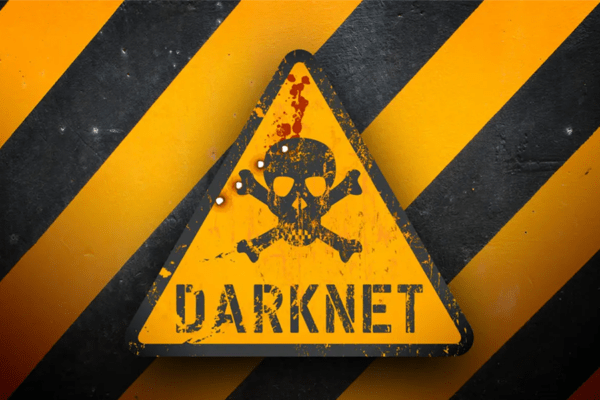In 2021, victims of hackers and other criminals lost $6.9 billion due to identity theft, online scams and data breach incidents, according to the FBI’s Internet Crime Complaint Center. With data breaches and cybercrimes becoming more commonplace, consumers and businesses must take steps to protect sensitive and private information. Understanding how hackers get access to information is an important first step in the process.

Oversharing on Social Media
Social media makes it easier than ever to keep in touch with friends and family, but the increased use of sites like Facebook, Twitter and Instagram gives hackers a simple way to gain access to sensitive information.
A hacker can learn a lot about you just by following you. They can find out your address, your birthday, your interests and the names of your pets and family members. With these personal details, they may be able to guess a password for one of your online accounts.
Launching Phishing Attacks
Phishing attacks were the most commonly reported type of crime committed by hackers in 2021. With a phishing attack, a hacker impersonates a company you have a relationship with, such as a bank, a store or even a shipping service. They claim that you need to contact them for what sounds like an urgent reason and provide a link for you to click.
In some cases, clicking the link results in downloading malware to your phone or computer. After installation, the malware lets the hacker access any personal stored information. Some malware can even allow criminals to hijack your system. Then, they charge you a fee to get back control.
Phishing attacks can also be a way of gaining access to accounts. When you click suspicious links, they may prompt you to enter your account information, such as your username or password. Sometimes, phishing attacks ask you to provide your Social Security number or credit card number, making it easy for a hacker to steal information that they can use to make fraudulent purchases, steal your tax refund or even open multiple accounts in your name.
Buying Data From the Dark Web
Some hackers pass along personally identifiable information to other hackers. Often, this personal information comes from data breaches. When one occurs, hackers obtain personal data, such as Social Security numbers and credit card information, for hundreds or even thousands of people. Then, they sell this data to other criminals through the dark web.

Using Public Wi-Fi Networks and Unsecured Websites
Spying on open networks is another way for hackers to steal personal information. They may monitor public Wi-Fi networks to get passwords for bank accounts and credit card details when people make purchases or check account information while connected to these networks.
An unsecured website also allows identity thieves to peek at data. On an unsecured merchant website, a hacker can gain credit card information and personal data like your address. They can then use it themselves or sell it on the dark web.
Exploiting Outdated Software and Network Vulnerabilities
Hackers can use software or hardware to sneak into your system, and this is one of the main ways data breach incidents occur. Hackers get more and more creative over time, developing new malware and phishing attacks to steal valuable information.
Developers respond by releasing updates to make their applications more secure. Failing to install the latest version can leave your sensitive information vulnerable. This is especially true for antivirus software and operating systems.
Open ports can also provide a gateway to getting hacked. Open ports are endpoints on a network or router that allow connections. While not unsafe on their own, when not properly secured, they can let a hacker gain access.
Creating Fake Websites
Hackers go to great lengths to steal valuable information. They may set up a website that looks identical to one for a financial institution or online business in hopes of getting unsuspecting victims to enter personal information or credit card data.
Often, they promote these fake websites as a part of phishing attacks. However, they may also share them on social media or make their addresses very close to the legitimate address in hopes that users will reach them accidentally.
Other criminals use fake sites as a part of phone scams. They call the victim and tell them a payment is late or declined. Then, they say that a simple way to correct the problem is to visit the fake website and update personal information.

How to Protect Your Valuable Information
To protect personal or company information, follow these tips:
- Use different passwords for every account. Using unique passwords can ensure a hacker can’t access other accounts if they get login details for just one. Avoid commonly used passwords like consecutive numbers. Pet names, foods, emotions and first names are also often weak passwords. A strong password is one with a random series of letters, symbols and numbers. Many web browsers can create these strong passwords for you when you sign up for accounts.
- Read website addresses carefully. A secure website should have “https” at the beginning of its address. Don’t enter personal information if you don’t see this prefix. Also, make sure the website is authentic. Double-check with the business if you’re unsure.
- Install updates when prompted. Keep applications, operating systems and firmware on your phone and computer up to date. Do this whenever you receive a notification that an update is available to protect your information.
- Take action when you receive a data breach notice. If you’re the victim of a data breach, the company or website involved must notify you. Usually, you’ll receive a letter in the mail telling you what information may have been stolen. Ignoring these notices can leave you vulnerable to identity theft. Instead, change the password for the affected account. If you used the same password for other online accounts, change those, too. In the event your credit card information gets compromised, notify the credit card company. It can close your existing card and give you a new one with a different credit card number to secure your account.
- Never click suspicious links. If you receive an email or text asking you to sign into your account, delete the message. Then, go to the trusted website for the institution or company and log in there. Contact customer service if you’re unsure about the validity of a text or email.
- Monitor your credit report and statements. Check your credit report periodically to look for any accounts you don’t recognize. Make sure you carefully review bank and credit card statements for suspicious activity. Notify your credit card company promptly if you see any unauthorized transactions and request a new credit card number in case hackers post your information on the dark web.
- Check the security of websites and networks. When you’re using public Wi-Fi networks, don’t enter Social Security numbers, credit card numbers and other personal information. Also, avoid buying from websites that don’t have a valid security certificate. Make sure you sign out of public or shared computers after every use.
- Use two-factor authentication. With two-factor authentication, it takes more than just entering your login details to gain access to your accounts. In addition to providing usernames and passwords, the authentication process adds an extra layer of security by requiring you to enter a code texted to your phone or scan your fingerprint.
- Train your employees. If you own a business, educate your team about the threat of data breaches. Share different ways hackers get information and best practices for protecting data to ensure all network users take the necessary precautions. Advise employees not to use the same password for all applications and require them to update their passwords regularly.
- Report incidents when they occur. If you become the victim of identity theft, file a police report and fill out an IC3 complaint form. You can also report unsuccessful attempts to steal personal information. Warn coworkers, friends and family about the incident so they know what to look out for.
- Enlist the help of professionals. IT security service specialists can identify vulnerabilities in your network and take steps to mitigate them before hackers attempt to infiltrate. They can also respond quickly to potentially stop hackers in the midst of an attack and assist you with recovering stolen information or taking back control of your system.
IT Security Services Can Defend You From Hackers
EIRE Systems, the leading IT services provider, protects financial institutions, insurance providers and other companies in Japan, Hong Kong, Singapore and China from hackers with expert IT security services. We also offer professional IT support services to help you remove malware and keep antivirus software applications up to date to reduce the likelihood of data breaches. Contact us today to learn more about our services.
About the Author: EIRE Systems
EIRE Systems is a leading independent provider of professional IT, AV and Access Security services to the financial, insurance, manufacturing, health care, retail, construction, hospitality, commercial real estate, legal, educational and multinational sectors in Japan and throughout the Asia Pacific region. EIRE Systems has expertise across a wide spectrum of Information Technologies, with a track record for successfully completing hundreds of assignments since its establishment in 1996.



